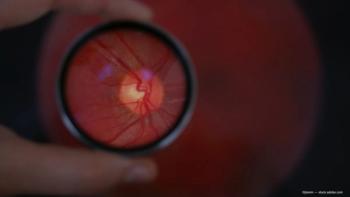
Q&A: Understanding the influences on molecular confirmation after genetic testing for IRDs
Key Takeaways
- Age of onset, familial consanguinity, and family history significantly impact the likelihood of a positive genetic test for IRDs.
- A 5-year delay between clinical diagnosis and genetic testing highlights the need for improved referral pathways and ophthalmologist education.
João Pedro Marques, MD, MSc, PhD, from Coimbra University Hospital presented a study on genetic testing for inherited retinal diseases (IRDs) at the 2025 ASRS meeting. The meeting was held in Long Beach, California, from July 30 through August 2, 2025.
The research revealed that age of onset, familial consanguinity, and family history significantly impact the likelihood of a positive genetic test. The study highlighted a 5-year delay between clinical diagnosis and genetic testing, emphasizing the need to improve referral pathways and educate ophthalmologists to facilitate earlier testing and access to clinical trials.
Note: The following conversation has been lightly edited for clarity.
Ophthalmology Times: This study explored the journey of patients undergoing genetic testing for IRDs. What does the data show?
João Pedro Marques, MD, MSc, PhD: Basically, when you do genetic testing, even if you use state of the art genetic testing, up to 30% of patients will remain genetically unsolved. And what we wanted to look at was trying to understand if there are some baseline determinants that would explain why some patients are genetically unsolved and others are genetically solved, and why? Because this can be highly frustrating for the patients and for the physician himself.
OT: What were the parameters of this study?
Marques: We conducted a retrospective single center study. It involved more than 800 patients with IRDs, and we classified these patients into predetermined phenotypes, 14 different phenotypes, and then looked at the results. It is very interesting, we found that the age of onset before 18 years of age, the presence of familial consanguinity, and the presence of a family history are actually significant determinants to obtain a positive genetic testing result. And if you put these factors all together, the likelihood of obtaining a positive test is even higher. However, if none of these factors are present, you'll get only a 30% chance of having a positive genetic testing results.
OT: How does this apply to the real-world?
Marques: Our main highlight is actually how real-world data can impact your daily clinical practice. And this is a way of informing your patient by doing a pre-test counseling and telling them, "Look, there's a chance that you will not be molecularly solved, and this chance can be of 60, or 70, or 30 ,or whatever percent." So one thing that we noticed in our study also is that there's a significant delay between the clinical diagnosis. This is when a general ophthalmologist or a general retina specialist makes a diagnosis of an IRD and genetic testing itself. And this delay was roughly 5 years. So in order to decrease this delay, we can either capacitate our general ophthalmologist to order the genetic testing. This is option 1, or option 2 is improve the referral pathways, so that we can have our patients being tested earlier.
And why is this important? This is very important because of access to clinical trials and access to new gene therapies. So, if you don't have a genetic diagnosis, you won't be able to be enrolled in these kinds of treatments or clinical trials, and what the physicians should look at when they are ordering the genetic test is actually this history about the onset of symptoms, the family history of IRD, and the history of consanguinity. And with this in mind, with this information, they can explain to their patients the likelihood of having a positive genetic test. This is as this has a huge influence for patients, because sometimes they get very, very frustrated because it's been years since their journey has started, then they finally find someone who says, "Okay, this is genetic. Let's do genetic tests," but then the results come back inconclusive. So this is a way of you preparing your patient to what comes next, for next steps.
Newsletter
Don’t miss out—get Ophthalmology Times updates on the latest clinical advancements and expert interviews, straight to your inbox.









































